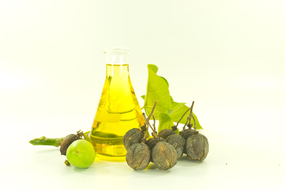An effective industrial catalyst for the faster production of biofuels at low temperatures has been synthesized by an international scientific team with the participation of scientists from MISIS University. The results of the work have been published in the Asian Journal of Chemistry.
The growth rate of environmental problems and the simultaneous global energy crisis are motivating scientists around the world to search for alternative ways of obtaining energy. Biodiesel is an excellent example of alternative renewable liquid fuel. It is a liquid motor biofuel that can help compensate the growing demand for “green” energy.
Biodiesel has a number of advantages over hydrocarbon fuels: it is safer, non-toxic, biodegradable and contains minimal amounts of sulfur and its compounds. Biodiesel is more oxygenated than conventional mineral diesel and burns more efficiently in the engine, thus resulting in lower emissions of hydrocarbons, CO2 and toxic impurities. The presence of oxygen also increases the lubricating power of the fuel, which extends the life of the engine. In addition, biodiesel has a higher cetane number and flash point in comparison to diesel.
Biodiesel is a mixture of fatty acid esters that can be prepared from various vegetable oils or animal fats. In the United States and Europe, biodiesel is produced from edible oils — sunflower oil or soybean oil, while in India, non-food oils such as jatropha and karanjia are used. Biodiesel is obtained by esterification with monohydric alcohols — methanol, ethanol, etc.
The heterogeneous catalyst plays a key role in the production of biodiesel at the industrial level. In a chemical reaction, vegetable oil or other triglyceride source reacts with monohydric alcohols in the presence of a catalyst, finally forming biodiesel and glycerol.
In the presented scientific work, scientists first used wollastonite as a catalyst — a mineral from the class of silicates, natural calcium silicate.
“Wollastonite was synthesized by auto combustion, with
L-alanine used as a combustion fuel. To evaluate the catalytic capacity of the resulting wollastonite, a transesterification reaction of soybean oil with methanol was carried out. After the reaction, biodiesel, glycerol and catalyst were separated by centrifugation. In order to optimize the percentage of catalyst used in the production of biodiesel, we conducted a number of experiments with different amounts of catalyst. As a result, we concluded that alkali metal oxide and silica in the composition of wollastonite helped to produce biodiesel (82.6%) in a shorter time and at a lower temperature,” said one of the authors of the study, Rajan Choudhary, a researcher at MISIS University.
Currently, the research team continues to optimize the resulting catalyst for industrial use.





